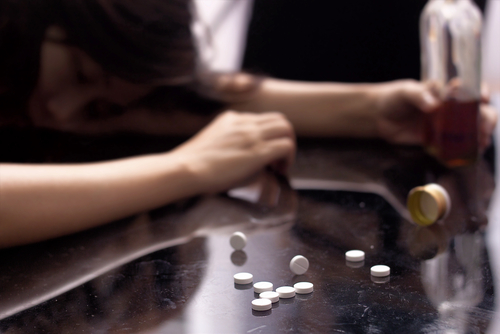Pink cocaine, often referred to as “Tuci” or “Tucibi,” is a synthetic designer drug that has gained popularity at parties and nightclubs. Despite its appealing name and bright color, pink cocaine is highly dangerous and unpredictable. The drug is a mixture of various substances, typically including synthetic stimulants, hallucinogens, and other chemicals, making it distinct from traditional cocaine. Users often mistakenly believe that pink cocaine is safer or less addictive due to its appearance, but the reality is quite different. Unlike its name suggests, pink cocaine does not chemically resemble cocaine, and the exact composition varies, making it particularly hazardous.
The dangers of pink cocaine cannot be overstated. In some cases, the drug contains substances such as MDMA, synthetic cathinones (commonly known as “bath salts”), and ketamine, which can result in severe side effects. According to studies, synthetic drugs like these have been linked to severe health issues, including heart attacks, seizures, and even death. Additionally, the lack of regulation in the production of pink cocaine means users have no way of knowing the strength or toxicity of what they’re ingesting.
What is Pink Cocaine?
Pink cocaine, also known as “Tuci” or “Tucibi,” is a synthetic designer drug that has recently gained popularity, particularly in Latin America and among partygoers in nightclubs and raves. Unlike traditional cocaine, which is derived from the coca plant, pink cocaine is not chemically related to cocaine. Instead, it is typically a mixture of various synthetic substances, often appearing in a pink or reddish powder form. The drug is marketed as a recreational or party drug, but its composition makes it highly dangerous and unpredictable.
The name “pink cocaine” is misleading because it suggests a similarity to cocaine, though the two substances have little in common. Pink cocaine often contains a combination of synthetic cathinones (“bath salts”) and phenethylamines (psychoactive substances similar to MDMA). In some cases, it may also include other harmful drugs like ketamine or LSD. According to the World Drug Report 2024 from the UN Office on Drugs and Crime (UNODC), the emergence of new synthetic drugs, including opioids and other synthetic compounds, has contributed to a significant rise in health emergencies and drug-related deaths globally. This makes the use of pink cocaine especially dangerous, as users have no way of knowing the potency or toxicity of the substances they are consuming.
What Are the Effects of Pink Cocaine?
Pink cocaine produces a wide range of effects due to its unpredictable composition. These effects can vary from stimulating to hallucinogenic, depending on the combination of substances used in the drug. Since pink cocaine often contains synthetic stimulants and psychoactive compounds, the experience can differ significantly from person to person. Some of the common effects reported include:
- Euphoria: Users may experience intense feelings of pleasure, energy, and well-being, similar to the effects of MDMA or ecstasy.
- Increased Sociability: The drug can enhance social interactions, making users feel more talkative, confident, and outgoing, which explains its popularity in party settings.
- Hallucinations: Some individuals report visual or auditory hallucinations, particularly if the drug contains substances like LSD or ketamine.
- Altered Perception of Time: Users often describe a distortion in their sense of time, with events occurring faster or slower than usual.
- Enhanced Sensory Perception: The drug may amplify sensory experiences, making lights, sounds, and touch more intense or overwhelming.
While these effects might seem enticing, they come with significant risks. The varying composition of pink cocaine makes it highly dangerous. In 2020, it was reported that fewer than 75,000 people in each age group used synthetic stimulants, according to data from the Substance Abuse and Mental Health Services Administration (SAMHSA). However, despite the relatively low number of users, the unpredictable effects of synthetic stimulants like those in pink cocaine can lead to severe health risks, including heart attacks, seizures, and even death. The risk of these adverse effects is further amplified due to the uncertainty surrounding the drug’s potency and composition.
The Dangers of Pink Cocaine
Much like Galaxy Gas, the unpredictability of pink cocaine’s composition makes it highly dangerous, as users are unaware of what they’re genuinely ingesting. This can lead to severe health risks, including the possibility of a cocaine overdose. This unpredictability significantly increases the danger, as the combination of substances in pink cocaine can have unpredictable and life-threatening effects on the body.
1. Cardiovascular Risks
Pink cocaine can cause severe cardiovascular issues, mainly if it contains stimulants like synthetic cathinones or MDMA. These substances can raise the heart rate and blood pressure to dangerous levels, leading to heart attacks, strokes, and even death, especially in individuals with pre-existing heart conditions.
2. Psychological Effects
The psychoactive elements in pink cocaine can lead to severe psychological distress, including paranoia, anxiety, and panic attacks. In some cases, users may experience drug-induced psychosis, characterized by hallucinations, delusions, and a detachment from reality. These effects can be long-lasting and may require psychiatric intervention to treat.
3. Addiction
Like many other recreational drugs, pink cocaine carries a high risk of addiction. The feelings of euphoria and sociability it induces can make users crave repeated doses, leading to physical and psychological dependence. As users build up a tolerance, they may consume higher and higher doses, increasing the risk of overdose.
4. Overdose
One of the most dangerous aspects of pink cocaine is its unpredictability. Because it is often a mixture of multiple substances, users are at a high risk of overdose. The combination of stimulants, hallucinogens, and other unknown chemicals can overwhelm the body, leading to seizures, respiratory failure, and death.
5. Neurological Damage
Prolonged use of pink cocaine can cause lasting damage to the brain. Synthetic cathinones and other psychoactive substances can alter brain chemistry, leading to memory loss, cognitive impairment, and emotional instability. In some cases, these changes can be permanent, even after the individual stops using the drug.
Who is Using Pink Cocaine?
Pink cocaine is prevalent among young adults, especially those who frequent clubs, raves, and music festivals. Its bright color and association with a carefree party lifestyle make it attractive to this demographic. However, what many users fail to recognize is that the drug’s vibrant appearance masks its potentially deadly risks.
While pink cocaine is most commonly found in Latin America, its popularity has spread to other regions, including Europe and the United States. In these areas, the drug is often marketed as a designer drug or a more exciting alternative to traditional substances like MDMA or cocaine.
Legal Status of Pink Cocaine
Because pink cocaine is not a single, well-defined substance, its legal status can be complicated. In many countries, the sale, possession, and use of the individual components found in pink cocaine are illegal. Synthetic cathinones, for example, are classified as controlled substances in the United States and many other countries, meaning they are illegal to possess or distribute.
However, the constantly changing composition of pink cocaine means that law enforcement agencies often struggle to keep up with the new variations of the drug. This makes it difficult to regulate and control, further contributing to its widespread use and associated risks.
Getting Help for Pink Cocaine Addiction
If you or a loved one is struggling with pink cocaine addiction, it’s crucial to seek professional help as soon as possible. Due to the unpredictable nature of the drug, quitting on your own can be dangerous, and withdrawal symptoms can be severe. Fortunately, treatment options are available.
At Pathways Recovery Center, we specialize in helping individuals overcome addiction to dangerous substances like pink cocaine. Our comprehensive treatment programs include:
- Detoxification: The first step in recovery is safely detoxing from pink cocaine under medical supervision. Our detox program helps manage withdrawal symptoms and ensures that the body is rid of harmful substances.
- Residential Treatment: Clients can transition to our residential treatment program after detox, receiving 24/7 support and care. This allows them to focus on healing without the distractions and triggers of daily life.
- Therapy and Counseling: Addiction is not just physical—it’s also psychological. Our therapy programs, including individual counseling and group therapy, help clients address the underlying causes of their addiction and develop healthy coping strategies for the future.
- Aftercare Support: Recovery doesn’t end when treatment does. Our aftercare programs provide ongoing support to help clients maintain their sobriety and navigate life’s challenges after rehab.
Why Choose Pathways Recovery Center?
At Pathways Recovery Center, we understand the unique challenges that come with overcoming addiction to synthetic drugs like pink cocaine. Our team of experienced professionals is dedicated to providing compassionate, personalized care to every client, ensuring they have the tools they need to achieve lasting recovery.
Our state-of-the-art facility offers a safe and supportive environment where clients can focus on healing. From detox to aftercare, we are with you every step of the way on your journey to a drug-free life. Pink cocaine may seem like a fun and exciting party drug, but its risks far outweigh any temporary highs it may offer. The unpredictable nature of its composition, combined with its potential for addiction and overdose, makes it one of the most dangerous substances available today. If you or someone you know is struggling with pink cocaine use or requires cocaine addiction treatment, don’t wait to seek help. Contact Pathways Recovery Center today to learn more about our addiction treatment programs and take the first step toward a healthier, sober life.




